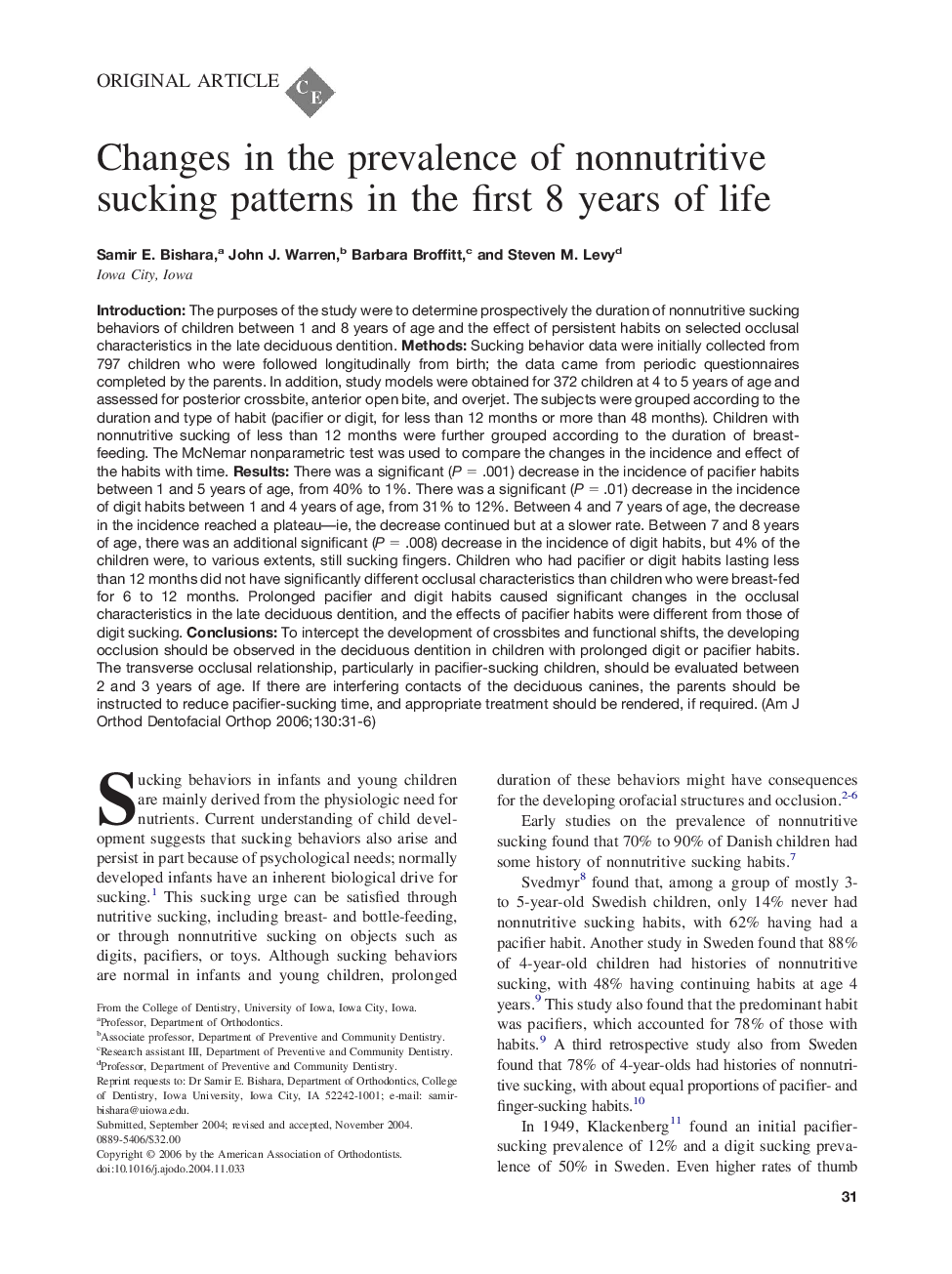| Article ID | Journal | Published Year | Pages | File Type |
|---|---|---|---|---|
| 3119002 | American Journal of Orthodontics and Dentofacial Orthopedics | 2006 | 6 Pages |
Introduction: The purposes of the study were to determine prospectively the duration of nonnutritive sucking behaviors of children between 1 and 8 years of age and the effect of persistent habits on selected occlusal characteristics in the late deciduous dentition. Methods: Sucking behavior data were initially collected from 797 children who were followed longitudinally from birth; the data came from periodic questionnaires completed by the parents. In addition, study models were obtained for 372 children at 4 to 5 years of age and assessed for posterior crossbite, anterior open bite, and overjet. The subjects were grouped according to the duration and type of habit (pacifier or digit, for less than 12 months or more than 48 months). Children with nonnutritive sucking of less than 12 months were further grouped according to the duration of breast-feeding. The McNemar nonparametric test was used to compare the changes in the incidence and effect of the habits with time. Results: There was a significant (P = .001) decrease in the incidence of pacifier habits between 1 and 5 years of age, from 40% to 1%. There was a significant (P = .01) decrease in the incidence of digit habits between 1 and 4 years of age, from 31% to 12%. Between 4 and 7 years of age, the decrease in the incidence reached a plateau—ie, the decrease continued but at a slower rate. Between 7 and 8 years of age, there was an additional significant (P = .008) decrease in the incidence of digit habits, but 4% of the children were, to various extents, still sucking fingers. Children who had pacifier or digit habits lasting less than 12 months did not have significantly different occlusal characteristics than children who were breast-fed for 6 to 12 months. Prolonged pacifier and digit habits caused significant changes in the occlusal characteristics in the late deciduous dentition, and the effects of pacifier habits were different from those of digit sucking. Conclusions: To intercept the development of crossbites and functional shifts, the developing occlusion should be observed in the deciduous dentition in children with prolonged digit or pacifier habits. The transverse occlusal relationship, particularly in pacifier-sucking children, should be evaluated between 2 and 3 years of age. If there are interfering contacts of the deciduous canines, the parents should be instructed to reduce pacifier-sucking time, and appropriate treatment should be rendered, if required.
